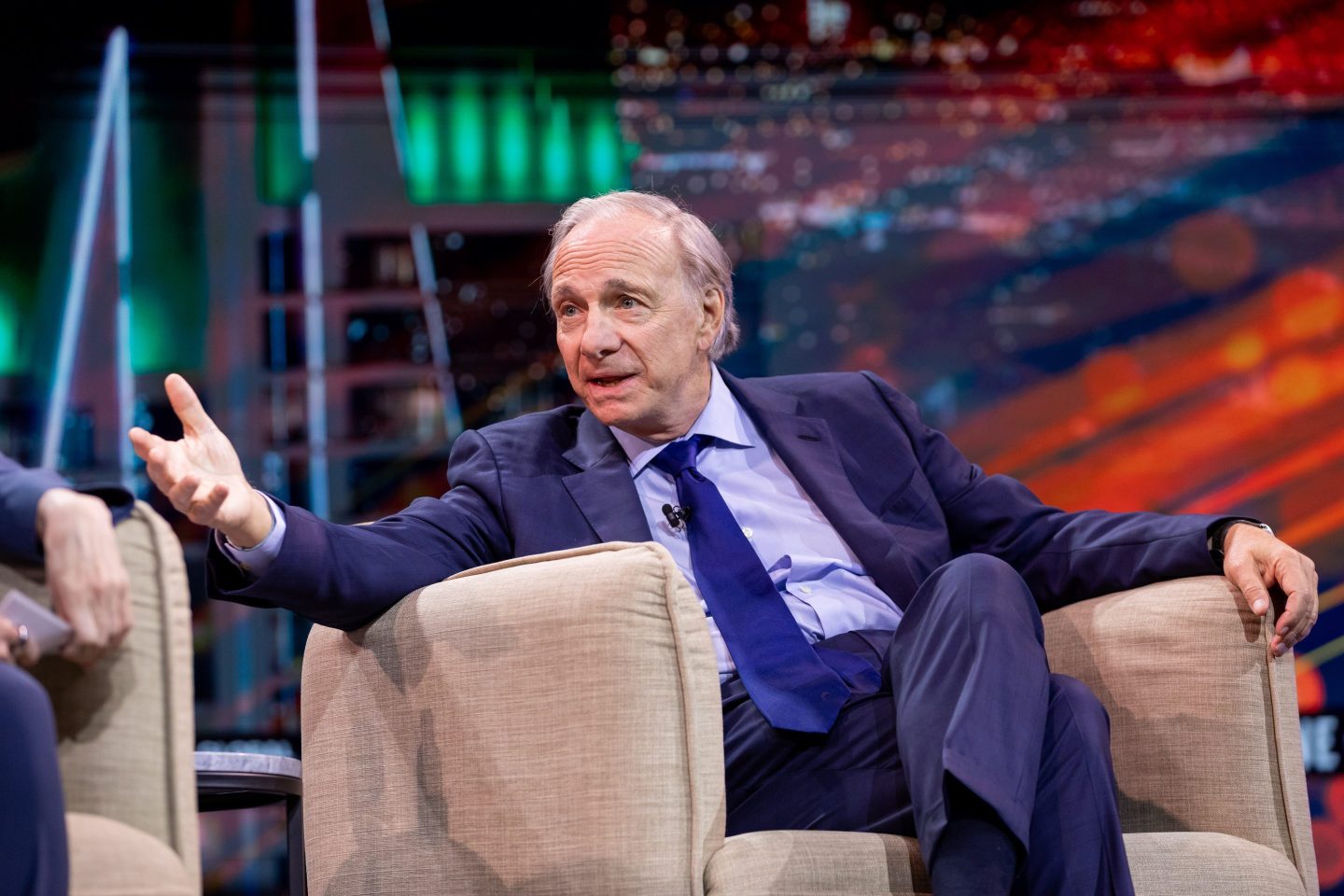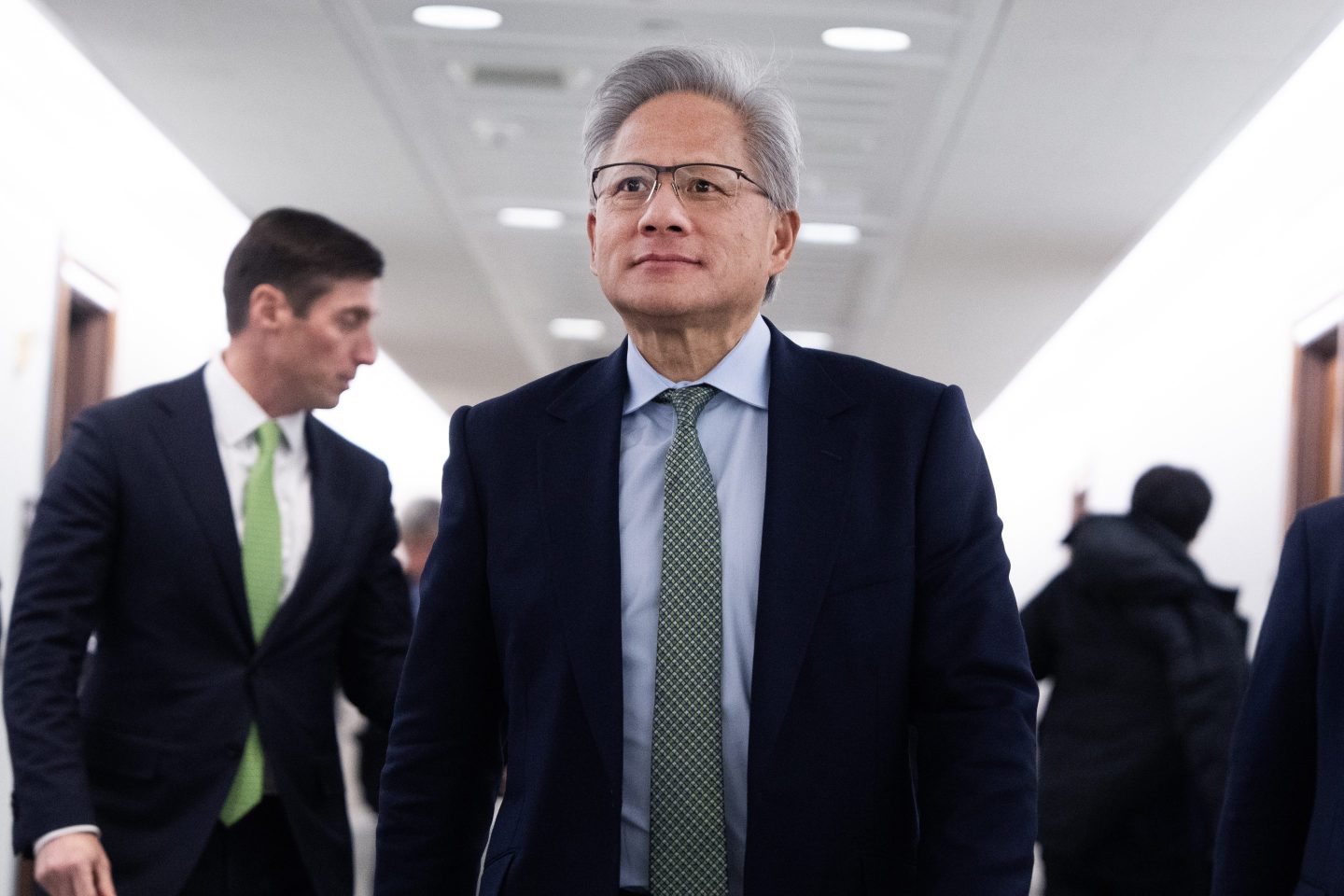On the surface, the going looks pretty good in the American economy. Wall Street is roaring, Silicon Valley is booming with potential, unemployment is fairly steady, and GDP is on the rise. A healthy picture, right?
Wrong, says Ray Dalio. There is now so much variation in the U.S. economy that it can no longer be looked at “as a whole.”
The dynamic is growing increasingly complex as the nation is becoming more reliant on its most productive industry: technology. While Wall Street has begun to mutter the world “bubble” in relation to valuations, Dalio warns that more widely, the prospects of the majority of workers are now tied to those in a relatively small sector.
“I think the issue is very much that you can’t look at the U.S. as a whole nowadays,” the Bridgewater Associates founder said at the Fortune Global Forum in Riyadh on Monday. He added: “You have to look at everything in terms of the very, very big differences and how those differences are handled.”
He explained: “If you’re looking at, let’s say, the AI world, and really what amounts to about 3 million people—1% of the population—leading, and then … the 5% or 10% around them, you have one world that the whole world is dependent on.
“And then you have the bottom 60% of the population.”
Dalio’s take echoes research released by Moody’s earlier this month. According to the analysis, 22 U.S. states are seeing their economies contract—effectively in a recession. Meanwhile, just 16 are seeing economic growth, while 13 are classified as “treading water.” That said, the states contributing the most to U.S. GDP—California, Texas, and New York—are all in the clear, pushing the overall growth of the country into the green as a result.
Indeed, Moody’s chief economist Mark Zandi told Fortune the future of the entire U.S. economy is tied to the growth in two states: California and New York. California, of course, because it is home to Big Tech and New York as the financial partner benefiting from its West Coast innovations.
Dalio continued: “Consider this, 60% of the American population has below sixth-grade reading level. That’s tough, and with that [they’re becoming] unproductive, and because of those things you have a dependency, an extreme dependency.”
According to the National Literacy Institute, 54% of U.S. adults read below the equivalent of a sixth-grade level, and 64% of our country’s fourth-graders do not read proficiently.
“Is it a bubble? Is it not a bubble? We will debate that, and we’ll eventually find out, but in any case it is in itself an issue.”
Dealing with the problem
Wealth inequality in the U.S.—and indeed in many of the globe’s developed nations—has increasingly diverged over the past few decades. Since 2020 the shift in wealth has been heavily toward those at the upper end of the income ladder.
According to data from the Fed, between 2020 and 2025 the wealth of the entire bottom 50% of the U.S. population has increased by a little over $2 trillion. By contrast, the assets held by the top 0.1% have nearly doubled from $12.17 trillion to $22.33 trillion, per latest estimates.
“The question is, what do [policymakers] do when you don’t have enough money and you have this big wealth gap?” Dalio asked.
His advice to those in government, he continued, would be to recognize that redistributing wealth is a “very difficult decision to make” with huge implications for the productivity of a nation as a whole. “Deal with it as a mechanical, not an ideological thing,” he added. “And on that basis, what you have is a choice of who’s gonna pay and how are you going to do this?”
Administrations may be rightly nervous about taxing those with larger pots of disposable income, after all, they may be the only ones spending. Analysis, again from Moody’s, showed that working from a basis point of 100 (equivalent to spending levels in Q4 of 1999), the top U.S. earners—those in the 96.6% to 100% category—have increased their spending to around 170 basis points, at the time of writing.
Conversely, low- and middle-income earners have increased their spending to around 120 basis points. That being said, the consumer price index has followed an almost identical trajectory from Q4 2020 to the most recent figures, meaning spending is merely in line with inflation.
“The U.S. economy is being largely powered by the well-to-do,” Zandi noted. “As long as they keep spending, the economy should avoid recession, but if they turn more cautious, for whatever reason, the economy has a big problem.”













